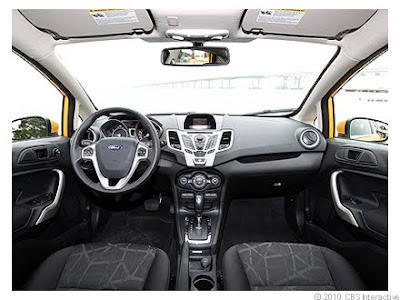Volkswagen previously priced itself above its intended market, but wants to regain the title of peoples' car with the all-new Jetta. At its very base S trim, the 2011 Volkswagen Jetta can be had for $15,995. But forget any tech features at that level--for the good stuff you need to move up to the SEL trim, a little pricier at $21,395.
Our Jetta SEL review car looked like a very good value, even at that price. For one, its navigation and Bluetooth phone systems are standard. It also gets a bigger engine than in the lower trim, but still gets mileage in the high 20s.
No matter what trim it comes in, the new Jetta isn't much to look at. Although it features a very modern design, with smoothed metal and de-emphasized ornamentation, it is nearly the Platonic ideal of a sedan. The roof shows a pleasant amount of curvature while allowing ample interior headroom, the hood tapers down to keep the grille from being too prominent, and the back flows evenly into the bumper.
Many people like nondescript cars, so in that sense the body style works for Volkswagen, but good luck finding it in a parking lot. On a practical note, the trunk is amazingly large. It actually seemed about equal to that of the
Audi A8 we tested recently.
One engine among many On paper, the 2.5-liter five-cylinder engine sounds quite powerful. With 170 horsepower and 177 pound-feet of torque, we expected to do front-wheel burn-outs. But the sensation was on the anemic side, with power quickly falling off as we accelerated. Knowing what we could get out of this engine, we learned to plan our passing and merging maneuvers very carefully.

The SEL comes with this five-cylinder engine, but three other engine options are available.
Although it uses double overhead cams and four valves per cylinder, this engine stops short of some of the efficiency advances Volkswagen has in its toolbox. But there will soon be a 2011 Jetta with a 2-liter direct injection turbocharged engine, Volkswagen's TSI, along with a diesel, TDI version. Another engine option currently available is the 2-liter four-cylinder in the base model, which only makes 115 horsepower.
The Jetta SEL's engine didn't feel particularly strong, but we wrung what we could out of it with the standard manual transmission. This manual showed good action through its gate, easily and comfortably shifting from gear to gear without confusion, but it is only a five speed, which seems a little behind the times. An automatic is also available for the Jetta, and the DSG can be had in the upcoming turbo and diesel versions of the car.
Even lacking direct injection, the fuel economy was very good. The EPA ratings for the Jetta SEL are 23 mpg city and 33 mpg highway. While cruising along freeways at speeds around 75 mph, we maintained 30 mpg, and turned in a final average of 28.3 mpg. It took a long time for the graphic fuel gauge to drop bars.

This manual transmission let us wring a little bit of fun out of the car.
No sports car, the Jetta's steering is tuned with the same sort of comfortable slack as the shifter. There is a little bit of initial play in the wheel, but it never feels loose. This built-in slack keeps the handling from being twitchy, in line with the widespread appeal Volkswagen intends for the car. The ride quality is about what we would expect, firm but not uncomfortable.
Nav and Bluetooth, standard Surprising is Volkswagen's decision to mostly do away with options and make cabin tech dependent on trim level. The SEL trim car comes standard with navigation, Bluetooth phone system, and digital audio sources. Volkswagen's new navigation system is a huge improvement over previous versions we've used in terms of performance, but it also lacks many features. This flash-memory-based system reacts quickly, whether processing user inputs or recalculating routes. It also offers both 3D and 2D maps, and shows the speed limit of the current road, something few factory navigation units do.
But the LCD is on the small side, and the system does not integrate external data, such as traffic or weather information. Nor does it read out street names or show detailed graphics describing upcoming turns. One particularly surprising omission is the ability to select destinations from the map, something most navigation systems can handle.
Hide Review Next page





















